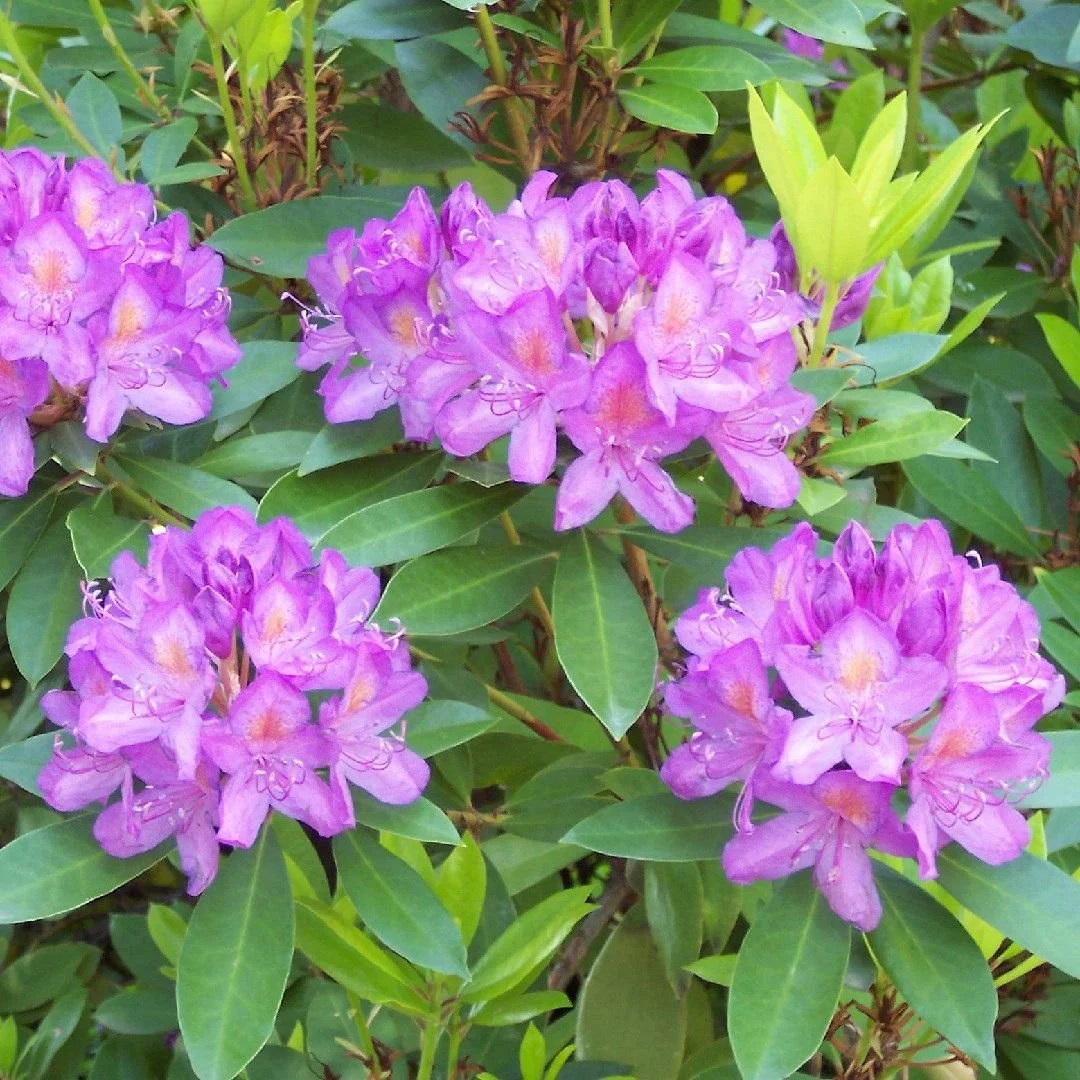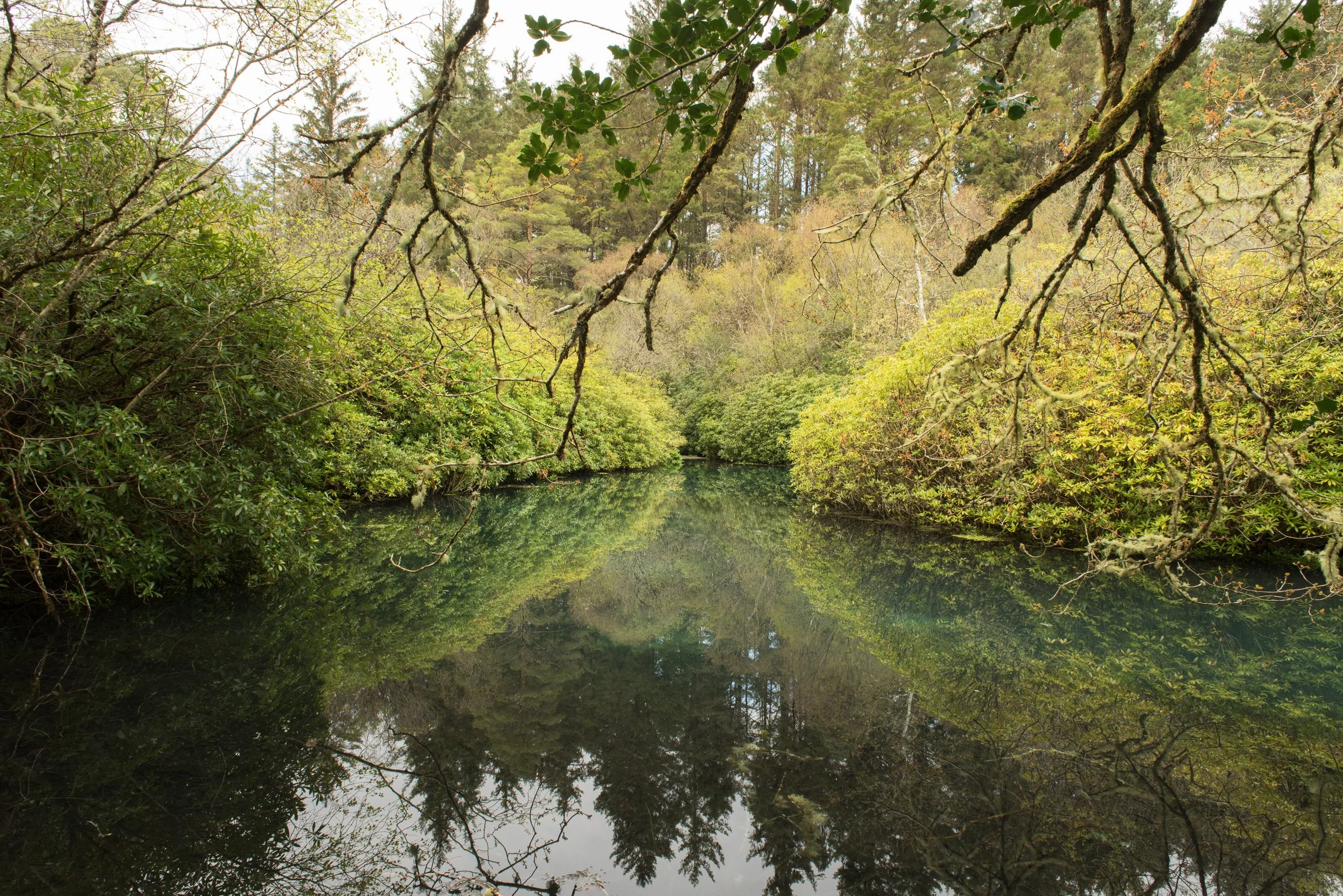Biodiversity, Rhododendron, and Killarney Mountain Meitheal
By Student Contributor Seán Noonan
In 2019 the Dáil declared a climate and biodiversity crisis in Ireland. This was a historic and greatly welcomed step in a country that has one of the lowest population densities in the EU, but simultaneously one of the smallest rates of tree coverage, at just 11 per cent of land nationwide. Compared to the EU average of 35 per cent, the discrepancy between population density and tree cover shows that Ireland has great room to both broaden its tree planting policies, but also to protect what forest remains.
Photo from Seán Noonan
Unquestionably, one of the key bastions in Ireland’s defence of the climate, biodiversity, and ecology, is Killarney National Park (KNP). KNP is the first, and largest, National Park in Ireland. KNP was gifted to the state by the Bourn Vincent family in 1932, and now comprises over 26,000 acres of forest, lake, and bog amongst its wide array of diverse habitats.
However, KNP, like the rest of Ireland, is fighting against the massive biodiversity crisis. One of the key threats to KNP comes in the form of the invasive Rhododendron Ponitcum. A native of Asia and the Western Mediterranean, this plant was introduced to the Killarney area in the 19th century for its gorgeous ornate flowers, and also to provide game cover for the deer of the park in order to make hunting more sporting.
Unfortunately, the romantic Victorian obsession with exotic flora and fauna has had a devastating impact on the park over the course of the succeeding two centuries. Killarney’s climate and soils have proven a perfect breeding ground for the plant. Paired with a deer population who love to eat all things green, bar Rhododendron due to its toxicity, the plant has begun to grow rampantly and is steadily choking our native woodlands.
Rhododendron Ponticum - Photo by Mountain Meitheal
Visitors to the park in the Summer are often greeted by a vivid display of entire mountainsides or lake islands turned purple when the Rhododendron is in flower; regularly commenting on how incredible a sight it is. There is an unarguable beauty, and an exotic Asiatic aesthetic, to this invasive plant which lends an alluring feel to the National Park. As a result, it’s easy to find an affinity for the Rhododendron and to understand why it was introduced.
Nevertheless, while some non-native plants and trees, such as Beech, have integrated relatively well into our ecology; Rhododendron, though it thrives, is a killer. Where Rhododendron grows, soon almost all other ecological activity dies away. The forest floor becomes shrouded in darkness so that nothing new grows and as a result mosses, lichens, fungi and countless other lifeforms fall away which in turn means that bug life is limited so that there’s little reason for mammals to inhabit Rhododendron forests unless simply to seek cover. Steadily the forest becomes silent and dark–lifeless.
Biodiversity is crucial because it is the key to keeping ecosystems stable and resilient, which in turn is vital in the fight against the climate crisis.
It is this exact threat to biodiversity which makes the removal of Rhododendron so essential. Biodiversity is crucial because it is the key to keeping ecosystems stable and resilient, which in turn is vital in the fight against the climate crisis. The National Park is fully aware of the threat at hand, and working hard to combat it, but the removal of Rhododendron is an exceptionally labour-intensive process, and therefore, very expensive. Minister of State for Nature, Heritage and Electoral Reform Malcolm Noonan has been on record stating that the estimated cost of Rhododendron eradication is €2,457 per acre. At such massive costs it would take a sum of almost incalculable millions to eradicate the plant. As a result of these mammoth costs, and due to the population’s willingness to take part in the climate fight, the National Park has also worked with voluntary organisations over the years in an attempt to manage the issue. Currently Killarney’s Mountain Meitheal is the main voluntary group involved in Rhododendron eradication and they regularly liaise with National Park staff to work on projects which are deemed of utmost importance.
Blue Pool Wood - Photo from Mountain Meitheal
The Meitheal is a community-based project which is generously funded by the Trustees of Muckross House and Gardens. The Meitheal’s work ethic is astounding, and they work tirelessly throughout the year to clear areas of the park of this invasive plant. Over the course of the previous working season, the Blue Pool Wood was cleared of established Rhododendron before work turned to the Abbey Wood area of KNP. The Blue Pool Wood is a gorgeous area of significant ecological importance, and the successful removal of the invasive plant from there has been a much-needed positive story in what is often looked upon as a Sisyphean task.
The Meitheal meets bi-weekly on Tuesdays and Sundays from 0900-1230. Participants can expect a good workout followed by gorgeous cups of tea, hot dogs and biscuits which tend to go down a treat after a few hours of hard work in good company. New members are needed and welcomed all year round; more info can be found on Facebook or by emailing info@killarneymountainmeitheal.com.




